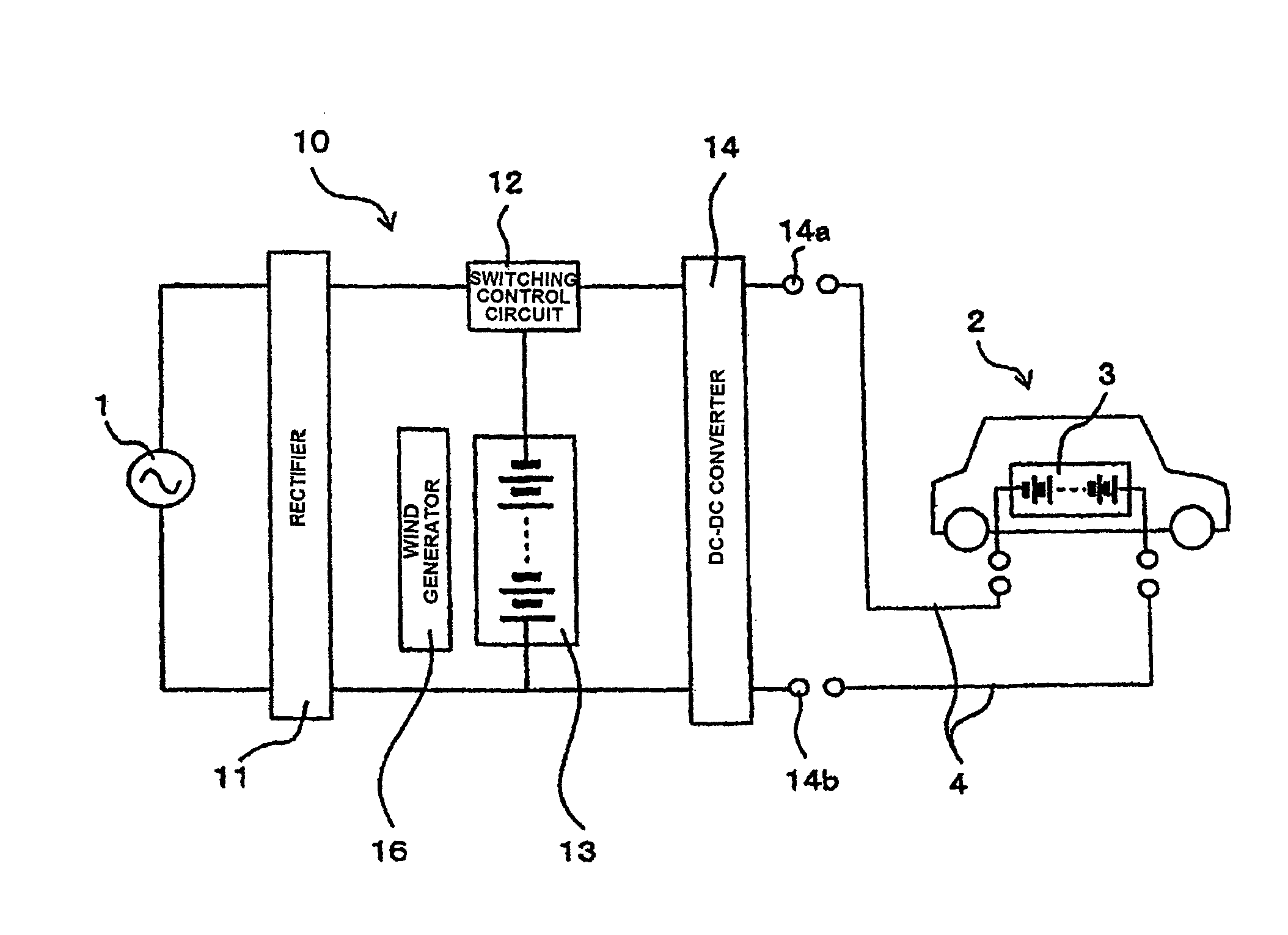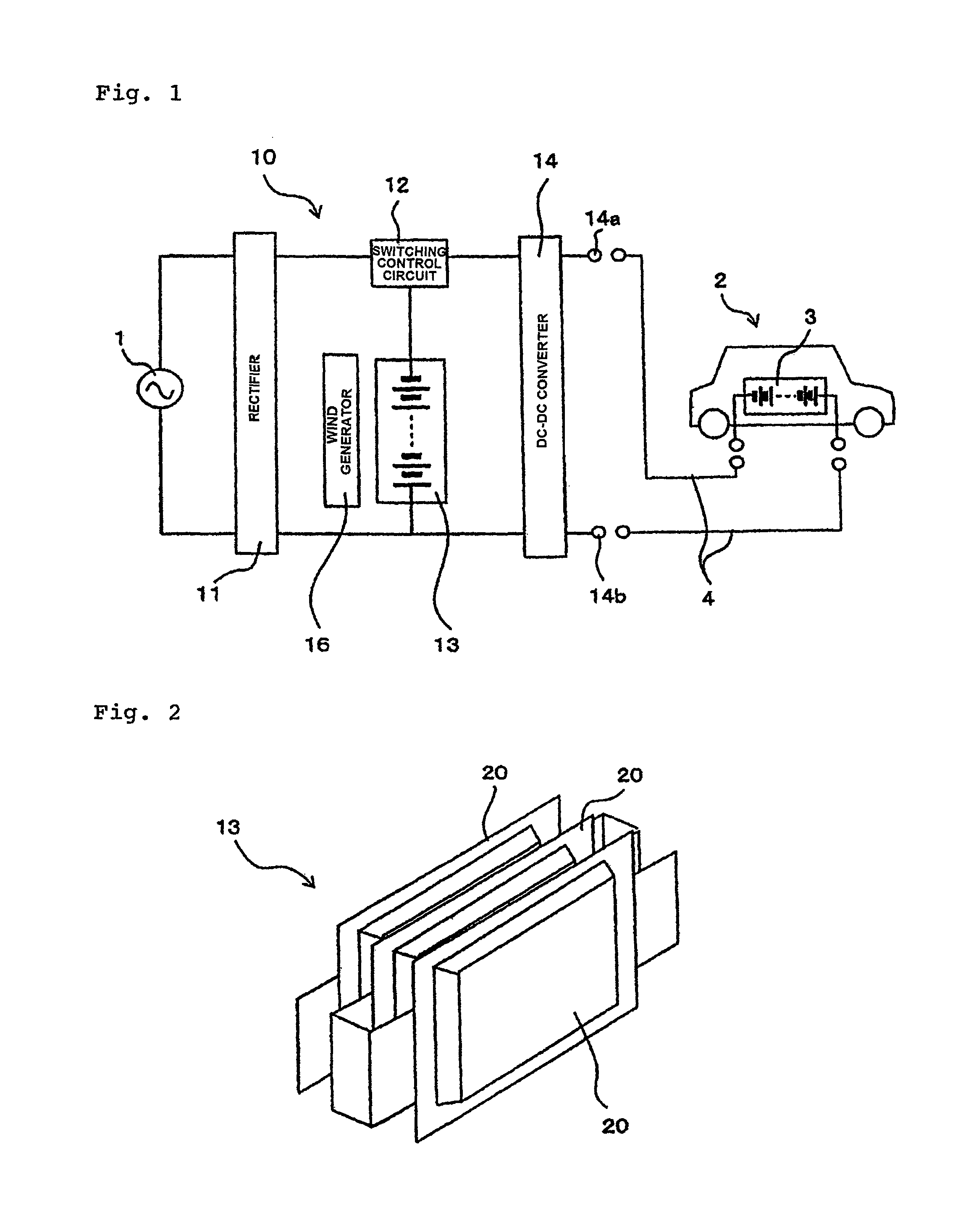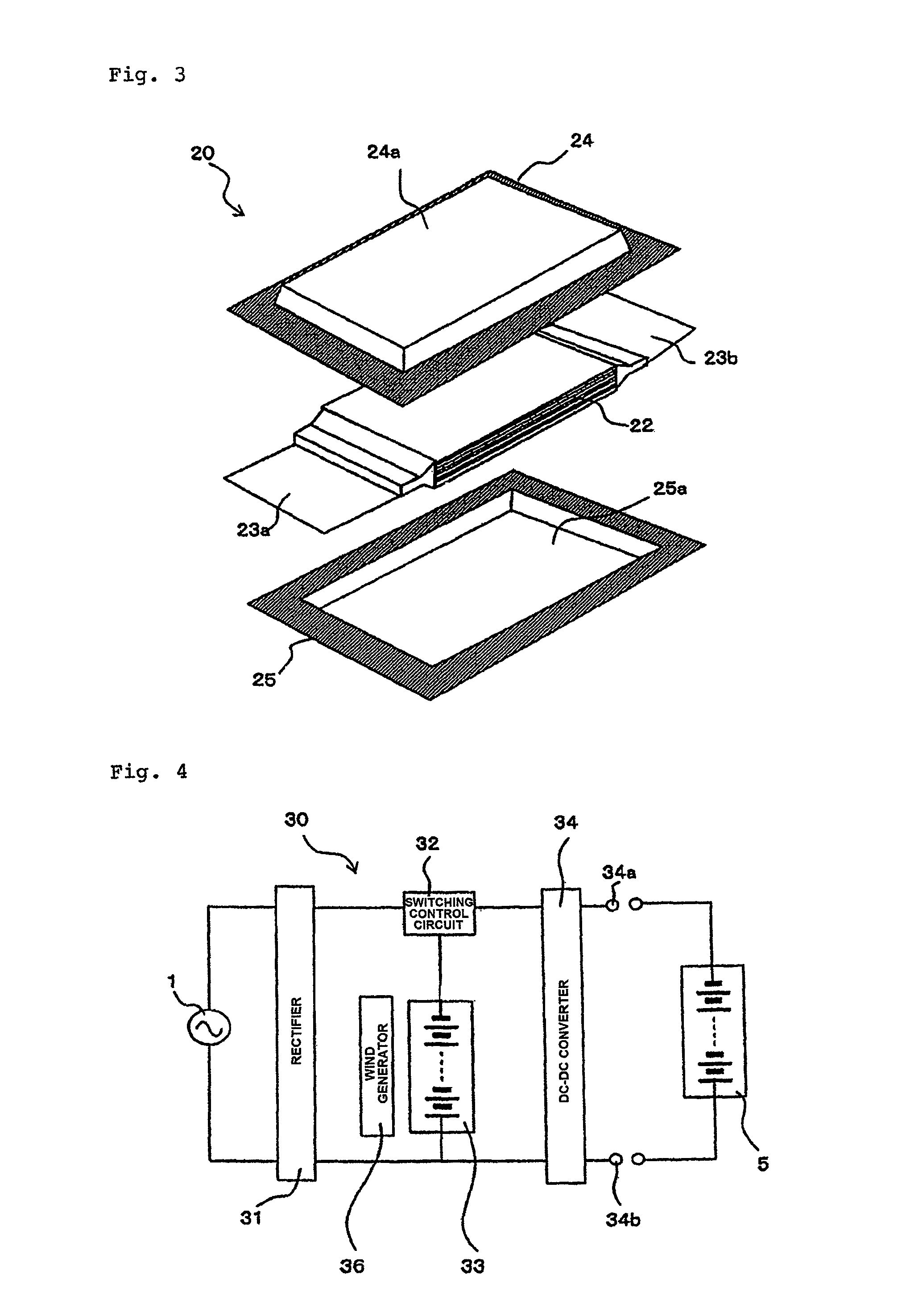Charging apparatus and charging/discharging apparatus including temperature adjusting element of secondary battery for buffering
a charging apparatus and temperature adjustment technology, applied in the direction of secondary cell servicing/maintenance, primary cell maintenance/service, safety/protection circuit, etc., can solve the problems of reducing testing efficiency, charging apparatus likely to be affected by ambient temperature, above-described conventional charging apparatus and charging/discharging apparatus, etc., to reduce cell thickness, improve heat conductivity, and fast control
- Summary
- Abstract
- Description
- Claims
- Application Information
AI Technical Summary
Benefits of technology
Problems solved by technology
Method used
Image
Examples
exemplary embodiment 1
[0024]Now, a first exemplary embodiment of the present invention will be described with reference to the drawings. FIG. 1 is a block diagram of a charging apparatus according to the present exemplary embodiment. The illustrated charging apparatus is used to charge a driving battery in an electric vehicle.
[0025]Charging apparatus 10 includes rectifier 11, secondary battery 13 used for buffering, isothermal wind generator 16, switching control circuit 12, and DC-DC converter 14. Charging cables 4 are connected to output terminals 14a and 14b of DC-DC converter 14. Driving battery 3 mounted in electric vehicle 2 is charged by connecting charging cables 4 to driving battery 3.
[0026]Rectifier 11 is a device that converts alternating current power loaded from commercial alternating current power source 1 into direct current power to supply the direct current power to secondary battery 13 used for buffering. Rectifier 11 functions as a current supply section according to the present invent...
second embodiment
[0054]Now, a second embodiment of the present invention will be described with reference to the drawings. FIG. 4 is a block diagram of a charging / discharging apparatus according to the present exemplary embodiment. The illustrated charging-discharging apparatus is used to test the secondary battery for charging / discharging characteristics during the manufacturing process.
[0055]Charging / discharging apparatus 30 according to the present exemplary embodiment includes rectifier 31, secondary battery 33 used for buffering, isothermal wind generator 36, switching control circuit 32, and DC-DC converter 34. Secondary battery 5 used for testing is connected to output terminals 34a and 34b of DC-DC converter 34 to test secondary battery 5 used for testing for the charging / discharging characteristics.
[0056]Rectifier 31, secondary battery 33 used for buffering, isothermal wind generator 36, and DC-DC converter 34 are similar to those described in the first embodiment and thus will not be descr...
PUM
 Login to View More
Login to View More Abstract
Description
Claims
Application Information
 Login to View More
Login to View More - R&D
- Intellectual Property
- Life Sciences
- Materials
- Tech Scout
- Unparalleled Data Quality
- Higher Quality Content
- 60% Fewer Hallucinations
Browse by: Latest US Patents, China's latest patents, Technical Efficacy Thesaurus, Application Domain, Technology Topic, Popular Technical Reports.
© 2025 PatSnap. All rights reserved.Legal|Privacy policy|Modern Slavery Act Transparency Statement|Sitemap|About US| Contact US: help@patsnap.com



